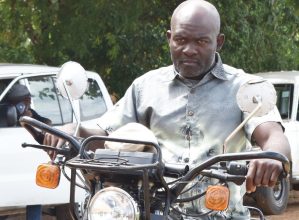Fixing irrigation schemes,rebuilding livelihoods
When Cyclone Ana affected nearly a million people in southern Malawi last year, Jenesi Jonasi wept for her maturing maize and Sankhawekha Irrigation Scheme along Ntanangala River in Zomba.
“As floods buried crop fields in silt in January 2022, we needed the 65-hectare (ha) scheme in shape to beat hunger and poverty as the cyclone occurred during the lean season,” she says.

Jonasi’s house collapsed as the torrents battered the Southern Region for three days nonstop. When the rainstorm regressed, the mother of five returned to the irrigation scheme where floods had washed away the water intake, riverbanks and 12 pipes.
“I was devastated. Farming in the scheme stopped for six months as we could not afford repairs. We lost time and money. To us, farming is a business,” says the mother of five.
The farmers who work the irrigated fields dropped from 112 to 76 during the disruption, says their chairperson Eric Kazembe, 46.
“The river changed its course, washing away crops and sections of the scheme. Thirty-six farmers gave up because we couldn’t afford to fix the damage,” he explains.
Sankhawekha is one of the schemes rehabilitated by the Malawi Resilience and Disaster Risk Management Project (MRDRMP) funded by the World Bank.
The works involve pipeline restoration, protection of a wall built across the stream to raise water levels and strengthening prone riverbanks with rocks.
This shatters the farmer’s greatest worry, Kazembe states.
He was among 15 farmers who dug a three-metre-deep canal using hoes, axes, shovels and picks to channel water into the floodplain haunted by scanty rains.
“We named the scheme Nkhawazatha because the 700m canal answered our main worry. Then we didn’t have any idea how to channel water past a hilly terrain. The cyclone brought back the headache.”
Farmers surrounding the scheme covered with beans, maize, groundnuts, eggplants and tomatoes get three harvests from April to November.
Kazembe reaps 40 bags of maize and 12 bags of beans from his 1.5ha plot.
“Winter cropping is our main source of food and money. Many farmers can afford decent houses, livestock, motorcycles and keeping children in school,” he says.
Their farming calendar “is no longer dictated by unpredictable rainfall,” says Kazembe.
“We are now in control,” he brags. “When our fields are dry, we open the water. If not, we close the valves.”
Sankhawekha is one of about 450 irrigation schemes covering about 2015ha of the 11 000ha of irrigable farmland in Zomba
Jessie Kadzamira, assistant irrigation engineer in the district, thanks MRDRMP for rehabilitating Sankhawekha alongside Likangala and Ndundumala irrigation schemes.
Similar works are also underway at Phandiro and Kamwanza irrigation schemes in Machinga District as well as Utale and Khwisa in Balaka.
“The support is restoring farmers’ activity and livelihoods amid repeated disasters caused by climate change. This is draining resources we could use to open new irrigation schemes,” she says.
Kadzamira urges farmers to stop charcoal production and farming practices that leave farmlands bare, rivers silted and irrigation schemes prone to flooding.
“We encourage catchment conservation beyond the rivers and restoration of degraded landscapes. If we stop living, farming and felling trees close to rivers, we will protect the environment, livelihoods and farmland, including irrigation schemes,” she explains.
Machinga Agricultural Development Division chief irrigation officer Chisuse Iman says contractors have fixed 80 percent of the damage suffered by the six schemes.
He says: “We are building back better to improve livelihoods and food security, so it’s pleasing that farmers now harvest up to 25 bags of maize from a field the size of a football ground.
“This will protect the scheme and surrounding communities’ future as they are assured of three harvests a year.”
The agricultural division has over 600 schemes in Machinga, Mangochi, Balaka and Zomba.
“Nine in 10 irrigation schemes were affected by cyclones Ana and Gombe last year as well as Freddy in March this year. Most of them require external support, but we need to protect the schemes from chronic disasters,” Iman says.
Ndundumala Water Users Association (WUA) chairperson Migireti Ajibu, 50, thanks the government for repairing the 90ha scheme cultivated by 54 women and 21 men.
“We used to struggle to water our crops, but we now have water flowing directly into our fields. After harvesting rain-fed maize, we plant rice twice a year,” she says.
The farmers have by-laws to safeguard water, soil and irrigation infrastructure. The water jury penalises non-compliance and reports vandals to the police.
Ajibu explains: “We have a good reason to protect this investment. Last year, we made about K13.2m after selling our rice collectively. We shared part of the revenue and used the remainder for WUA operations and maintenance of the scheme.”
“At 50, I raise four children single-handedly, but I don’t complain or beg. I’m self-reliant.”






One Comment